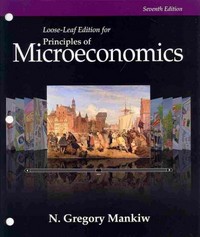Answered step by step
Verified Expert Solution
Question
1 Approved Answer
A film studio in Hollywood produces movies according to the function (yes, they can also produce fractions of movies... Think of half a movie as
A film studio in Hollywood produces movies according to the function (yes, they can also produce fractions of movies... Think of half a movie as a B-movie or so.) q = F(K, L) = K^0.5L^ 0.5 /100.
In the short run, capital (studios, gear) is fixed at a level of 100. It costs $4,000 to rent a unit of capital and $1,000 to hire a unit of labor.
in long run:

Step by Step Solution
There are 3 Steps involved in it
Step: 1

Get Instant Access to Expert-Tailored Solutions
See step-by-step solutions with expert insights and AI powered tools for academic success
Step: 2

Step: 3

Ace Your Homework with AI
Get the answers you need in no time with our AI-driven, step-by-step assistance
Get Started


